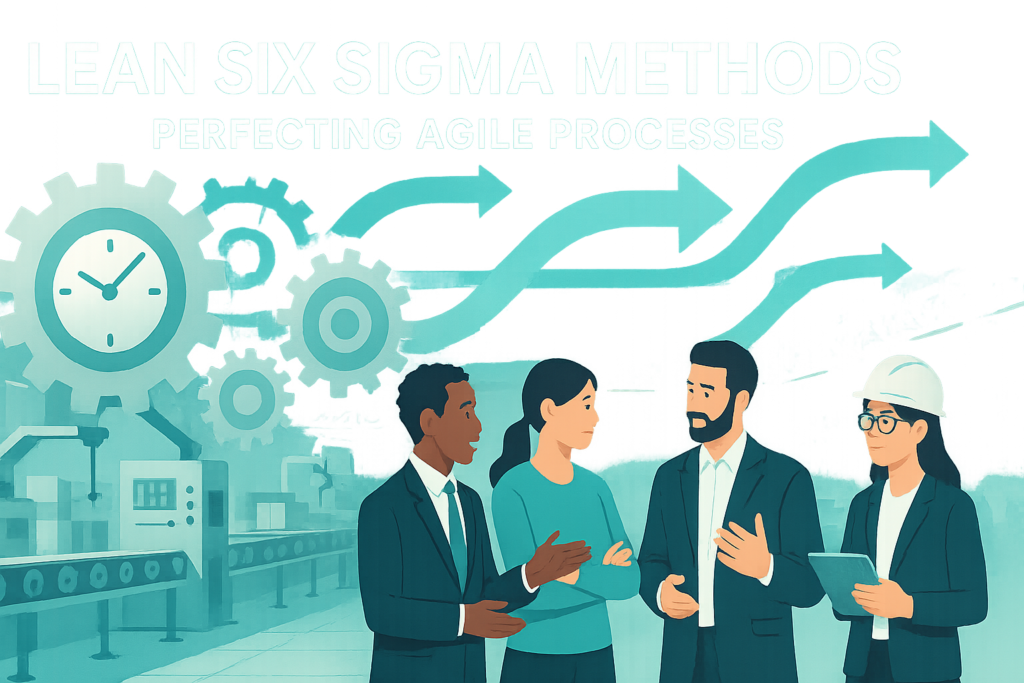Lean Six Sigma Methods: Perfecting Agile Processes
In today’s fast-paced business world, efficiency and adaptability are key to staying ahead. Enter Lean Six Sigma, a methodology that when combined with Agile processes, can revolutionize how businesses operate. Ready to dive into how these two powerhouses can work together for ultimate success? Let’s explore!
Table of Contents
1. What is Lean Six Sigma? 🤔
2. The Agile Process: A Quick Overview 🚀
3. Marrying Lean Six Sigma with Agile: A Match Made in Heaven 💍
4. Practical Steps to Implement Lean Six Sigma in Agile
5. Conclusion: The Path to Perfection
6. FAQs

What is Lean Six Sigma? 🤔
Lean Six Sigma is a methodology that combines two powerful business strategies: Lean and Six Sigma. Lean focuses on eliminating waste to improve efficiency, while Six Sigma is all about reducing variation and improving quality. Together, they create a robust framework for streamlining processes, which is crucial for businesses that want to maintain a competitive edge.
The Agile Process: A Quick Overview 🚀
Agile is a project management approach that emphasizes flexibility, collaboration, and customer satisfaction. It encourages teams to work in short, iterative cycles, known as sprints, to quickly respond to changes and deliver high-quality products. Agile is particularly popular in software development, but its principles can be applied to any industry.
Marrying Lean Six Sigma with Agile: A Match Made in Heaven 💍
So, how do these methodologies complement each other? Lean Six Sigma can enhance Agile processes by providing a structured framework for problem-solving and process improvement. Here’s how:
1. Enhanced Efficiency: Lean Six Sigma identifies and eliminates unnecessary steps in Agile workflows, ensuring that every action adds value.
2. Improved Quality: With Six Sigma’s focus on reducing defects, Agile teams can deliver better products, faster.
3. Data-Driven Decisions: Lean Six Sigma’s emphasis on data analysis helps Agile teams make informed decisions, reducing guesswork and improving outcomes.
Practical Steps to Implement Lean Six Sigma in Agile
Ready to integrate Lean Six Sigma into your Agile processes? Here are some actionable steps:
1. Training and Education: Invest in training your team on Lean Six Sigma principles to ensure everyone is on the same page.
2. Value Stream Mapping: Use this tool to visualize and analyze the flow of materials and information, identifying areas for improvement.
3. Continuous Monitoring: Implement regular check-ins and reviews to assess progress and make necessary adjustments.
4. Foster a Culture of Collaboration: Encourage open communication and teamwork to drive successful integration.
Conclusion: The Path to Perfection
Combining Lean Six Sigma with Agile processes offers a powerful way to enhance efficiency, quality, and customer satisfaction. By embracing these methodologies, businesses can not only survive but thrive in today’s competitive landscape. Ready to take the plunge? With the right approach, the path to perfection is within reach!
FAQs
Q1: Can Lean Six Sigma be used in industries other than manufacturing?
A1: Absolutely! Lean Six Sigma principles can be applied to various industries, including healthcare, finance, and IT, to improve efficiency and quality.
Q2: How long does it typically take to see results from implementing Lean Six Sigma in Agile?
A2: The timeline can vary depending on the complexity of the processes and the level of commitment from the team. However, many organizations start seeing improvements within a few months.
Q3: Is it necessary to hire a consultant to implement Lean Six Sigma?
A3: While hiring a consultant can be beneficial, it’s not mandatory. With proper training and resources, many organizations successfully implement Lean Six Sigma on their own.











